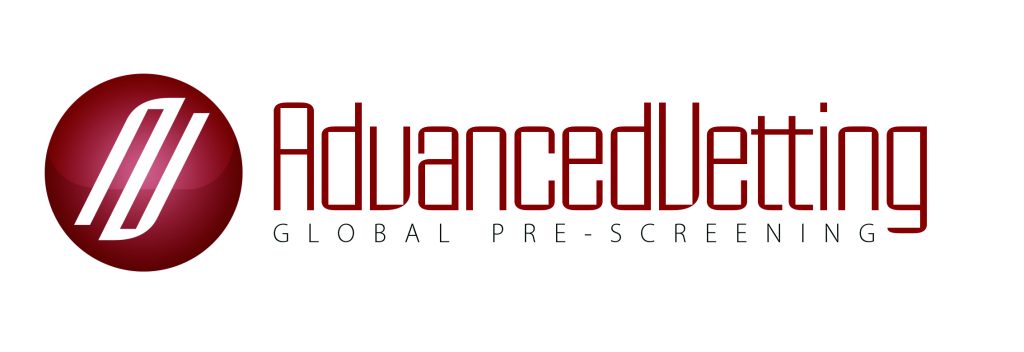Hiring the right people is essential for any business. However, the vetting process can be slow and resource-intensive. Employers need a way to assess candidates quickly without cutting corners.
We discuss how to streamline the vetting process, making it more efficient while maintaining accuracy. We hope this can help hiring managers save time, reduce workload, and make confident hiring decisions.
What Are the Challenges of Traditional Vetting Processes?
The conventional approach to vetting often involves multiple manual steps. This includes reviewing CVs, checking references, verifying qualifications, conducting background checks, and arranging multiple interview rounds. These steps can extend the hiring timeline significantly, leading to:
- Increased workload for the hiring team
- Delays that might cause top candidates to accept offers elsewhere
- Inconsistency in how applications are evaluated
- Unnecessary administrative burden on team members
- Potential compliance issues due to human error
For many UK employers, these inefficiencies translate to higher recruitment costs and missed opportunities to secure the best candidates.
Why Should Employers Streamline Their Vetting Process?
Streamlining your vetting process offers many advantages. Firstly, it can speed up hiring. You can fill positions faster and reduce productivity gaps. A quicker process also improves candidates’ experiences. You demonstrate that you respect their time and care about your employer brand.
A more efficient process creates consistency, ensuring all candidates are evaluated fairly. It also saves money by reducing administrative tasks and lowering recruitment costs. With less paperwork, recruiters can focus on finding the best candidates for the job.
How Can Employers Improve Their Recruitment Process?
To improve your recruitment process, you must start with the basics. Clear job descriptions, standardised application forms, and structured interviews can make a big difference.
Clear Job Descriptions
Efficient vetting starts before applications even arrive. Well-written job descriptions should clearly state the required skills and responsibilities. This helps to attract the right candidates and prevent unqualified ones from applying. While a simple step, it saves time later in the process.
UK employers should make sure job descriptions:
- Clearly list essential qualifications
- Separate required skills from preferred ones
- Explain the vetting process
- Reflect the company’s culture
Standardised Application Forms
Instead of accepting various CV formats, use standardised application forms. These help hiring managers find relevant information quickly and compare candidates more easily. The forms should gather exactly what’s needed for the first screening.
Structured Interviews
Switching from informal interviews to structured ones makes sure:
- All candidates answer the same key questions
- Evaluations follow consistent criteria
- Interview time is used effectively
- Team members can easily compare their notes when making decisions
What Technologies Can Help Automate the Screening Process?
You can rely on several technologies to automate and streamline your screening process.
Applicant Tracking Systems
An applicant tracking system (ATS) is one of the best tools for making vetting easier. It stores applications in one place, filters candidates based on set criteria, and tracks their progress through the hiring process. It also automates routine emails and generates reports on recruitment trends.
When choosing an ATS, look for one that works well with background check services and follows GDPR rules. A well-integrated system keeps recruitment organised and saves valuable time.
Pre-screening Assessments
Skills tests, personality quizzes, and job-specific assessments help you spot strong candidates early. These tools give clear, unbiased data on a candidate’s abilities and support the information in their application.
How Does a Streamlined Process Enhance the Candidate Experience?
Vetting isn’t just about assessing candidates. It’s often their first real interaction with your company. A slow or disorganised process can frustrate applicants and push top talent away.
An efficient process shows respect for candidates’ time and reflects professionalism. Elements like clear timelines, regular updates, and good communication keep candidates engaged. It leaves a positive impression, even if they don’t get the job.
What Are the Best Practices for Creating Efficient Screening Workflows?
Creating an efficient screening workflow helps you save time and focus on the best candidates. These best practices can help to streamline vetting and improve hiring decisions.
Tiered Vetting Approach
Not all screening steps need to happen at once. Instead, a tiered approach can improve your workflow. It starts with quick, automated checks to filter out unqualified candidates. Those who meet the minimum requirements move on to more detailed assessments. In-depth vetting is saved for shortlisted applicants. This ensures time and resources go to the most promising candidates.
As a result, your process is efficient and avoids unnecessary effort on those who don’t meet basic criteria.
Define Clear Responsibilities
Efficiency improves when everyone on the hiring team understands their role:
- Who reviews initial applications?
- Who conducts preliminary interviews?
- Who manages reference checks?
- Who makes the final decision?
Clear workflows prevent any efforts from being duplicated and ensure all aspects of vetting are covered.
Regular Process Review
The best organisations regularly review their vetting process to keep it effective. They check which steps add the most value and identify bottlenecks slowing things down.
They also assess whether they’re asking the right questions and how their hiring timeline compares to industry standards.
How Can Advanced Vetting Help You Streamline Your Process?
Efficiency matters, but so does thorough screening. Sensitive roles or regulated industries especially require it. That’s where Advanced Vetting can help. Our screening services fit smoothly into your hiring process, offering:
- Expert pre-employment screening
- Global coverage for international hires
- Full compliance with UK employment laws and data protection rules
- Fast results without sacrificing accuracy
By working with Advanced Vetting, you can offload the most complex parts of candidate screening. That frees up your team to focus on assessing skills, culture fit, and the qualities that make a great hire. Contact us to see how Advanced Vetting can help you hire faster and smarter.
Streamlining the Vetting Process: Frequently Asked Questions
Why should businesses streamline the vetting process?
A faster, organised vetting process saves time, lowers costs, and improves candidate experience without sacrificing accuracy.
What are the main problems with traditional vetting?
Manual steps slow hiring, increase admin work, and cause delays that can cost you top talent and lead to inconsistent decisions.
How can job descriptions improve the vetting process?
Clear job ads attract the right applicants, reduce irrelevant CVs, and set expectations early about vetting and responsibilities.
What is a tiered vetting approach and why use it?
Start with quick filters, then apply detailed checks later—this saves time and focuses effort on the best candidates only.
How does an ATS help automate the vetting process?
An applicant tracking system filters CVs, tracks candidates, automates emails, and integrates with background check tools.
Can structured interviews improve hiring accuracy?
Yes. They ensure consistent questions, fair comparisons, and objective scoring across all applicants.
What impact does a faster vetting process have on candidates?
It shows professionalism, reduces drop-offs, and gives candidates a smoother, more engaging experience.
Which tools help assess candidates before interviews?
Pre-screening tests and online assessments reveal skills and fit, helping shortlist better applicants quickly.
How can teams stay aligned during hiring?
Define who handles applications, interviews, checks, and decisions to avoid confusion and missed steps.
What does Advanced Vetting offer for efficiency?
We provide expert, compliant screening services that integrate seamlessly with your hiring process—fast, accurate, and legal.






